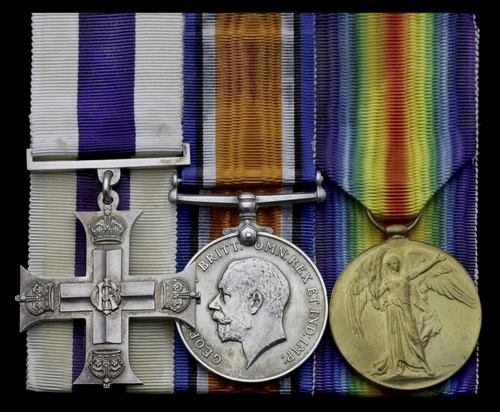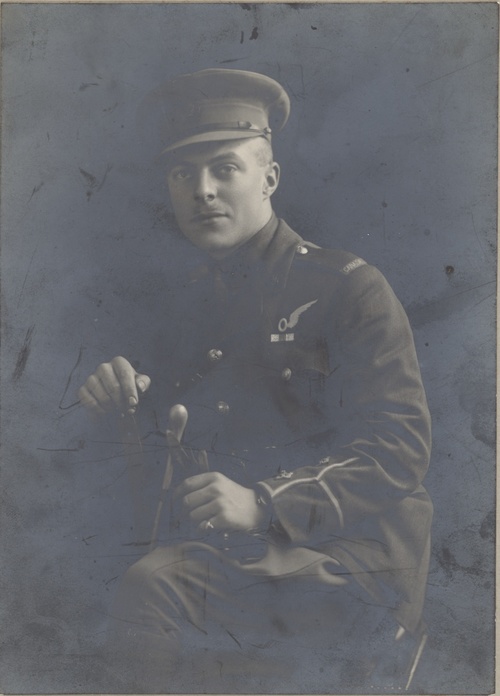Auction: 20002 - Orders, Decorations, Medals & Space Exploration
Lot: 585
The poignant Great War 'Observer's' M.C. group of three to Lieutenant W. B. Ferguson, Royal Air Force, late Canadian Railway Troops and Royal Flying Corps, whose reconnaissance exploits caused the enemy severe discomfort; just weeks after graduating as a Flying Officer, Ferguson took part in a night-flying exercise over the River Thames which ended in tragedy
Military Cross, G.V.R., the reverse engraved '1093151 Lieut. W. B. Ferguson R.F.C. 19 November 1917'; British War and Victory Medals (Lieut. W. B. Ferguson.), the last with officially re-impressed naming, nearly extremely fine (3)
M.C. London Gazette 22 March 1918:
'For conspicuous gallantry and devotion to duty. He has continuously done valuable work in locating targets and ranging and observing artillery fire, and was responsible on several occasions for the destruction of hostile batteries by our artillery. He successfully took part in several aerial combats while engaged in this work, and showed great initiative and determination throughout.'William Bruce Ferguson was born at the village of Ameliasburgh, Ontario on 12 August 1896, the son of Charles and Martha Ferguson. Gaining civilian employment as a farmer, he served in France with the 9th Canadian Railway Troops from 1915, before being gazetted to the 1st Canadian Pioneer Battalion as a 2nd Lieutenant on 23 August 1916. In March 1917 he was seconded to the Royal Flying Corps. Having trained as an Observer at the No. 1 School of Military Aeronautics, he was gazetted as a Flying Officer (Observer) on 11 April that year. On 20 May he was posted to No. 6 Squadron, equipped with R.E.8. reconnaissance bi-planes.
On 16 August 1917, Ferguson and his Pilot, 2nd Lieutenant G. Nicholas, were attacked by five Albatros scouts during a counter-battery patrol. Ferguson quickly shot down one of the attackers, and with the help of a French Spad S.XIII bi-plane which happened upon the scene, the enemy were driven off. Ferguson was awarded the Military Cross for this action. Two days later he drove an enemy two-seater away from the British trenches. At dawn on 21 September, Ferguson and Nicholas carried out a daring reconnaissance patrol. Flying at 100 feet, Ferguson strafed a party of some 300 Germans in a concrete redoubt, inflicting severe casualties. He only desisted when the plane's elevator controls were shot away by rifle fire, whereupon Nicholas nursed the plane back to British lines and Ferguson made his report. The information he provided was vital to the advance of the 43rd Division at 9.30 a.m. that day.
Ferguson completed his 'tour' with 6 Squadron on 8 December 1917, and was transferred to 198 (North) Training Squadron in England after a period of recuperative leave. This was a specialist night-flying training unit, involving extremely dangerous manoeuvres. Ferguson graduated as a Flying Officer on 31 May 1918, but was drowned during a flying accident on 7 July, when his plane ditched into the River Thames. He is buried at St. Andrew's Church, Hornchurch, Essex; sold with a folder of copied research, including the recipient's original portrait photograph.
Subject to 20% VAT on Buyer’s Premium. For more information please view Terms and Conditions for Buyers.
Sold for
£1,700
Starting price
£1600







